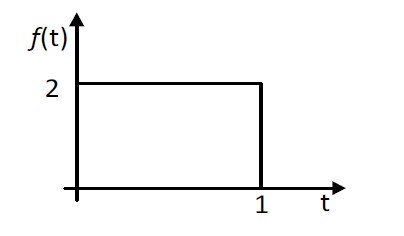Laplace transform of the function $f(t)$ is given by $F(s)=L\begin{bmatrix} f(t) \end{bmatrix}=\int_{0}^{\infty }f(t)e^{-st}dt$ . Laplace transform of the function shown below is given by

- $\displaystyle{\frac{1-e^{-2s}}{s}} \\$
- $\displaystyle{\frac{1-e^{-s}}{2s}} \\$
- $\displaystyle{\frac{2-2e^{-s}}{s}} \\$
- $\displaystyle{\frac{1-2e^{-s}}{s}}$